Continued from Sashiko Lesson 1
Patterns based on squares, diagonals, diamonds, and hexagons
These patterns have straight lines, and sharp edges or corners. This lesson will help you to get a feel of how to deal with different kinds of patterns, and how to decide what stitch sequence to follow. Remember that it is important to study a design and decide the pattern of stitching before actually working on it.
Square-based patterns
These patterns are made using blocks of squares. They are very easy to make and stitch. These patterns have right-angled corners.
Dan- Tsunagi (connected steps pattern)
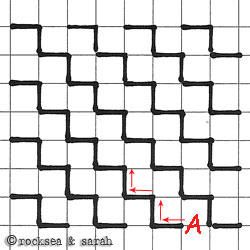 |
 |
| Stitch each set of steps at a time. Don’t try to carry over the thread from one set to the other. Instead, finish your stitch each time, and start each set afresh. | |
Kakuju- Tsunagi (connected angles pattern)
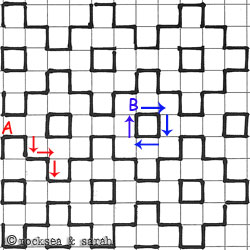 |
 |
| Stitch each set of steps at a time. Then, stitch each square at a time. This time, the steps lie horizontally, up and down, to make a pattern. | |
Diagonal based patterns
These patterns are made of the diagonals of squares, inclined at 45 degrees angle. The lines cut through the middle of each square.
Higaki (Cypress fence pattern)
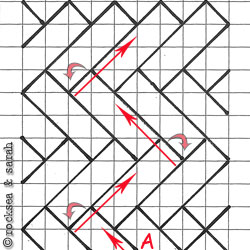 |
 |
| Stitch the diagonal lines in a zig-zag manner. To make sure that these lines are stitched continuously, you need to carry on the thread behind the fabric after finishing each line. The pink arrows indicate that. This pattern is a non-reversible pattern. | |
Diamond based pattern
These patterns are based on lines that cut across two squares lying horizontally adjacent to each other.
Kagome (Woven bamboo pattern)
 |
 |
| Work on the vertical straight lines first. Then, work on the diagonal lines. Finish the diagonal lines on one side before working on the ones on the other. | |
Matsukawa- Bishi (Pine shaped diamond pattern)
 |
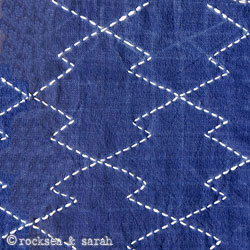 |
| Start working on the diagonal lines continuously, following the zig-zag path. Work on the zig-zag lines on one side before moving to the ones on the other. | |
Hexagon based patterns
This pattern is made using straight lines cutting across two squares, and two straight lines two squares down.
Mukai-Kikko (Faced tortoise shell pattern)
 |
 |
| Stitch the vertical lines first, as illustrated. Then, do the zig-zags of the hexagon. Finally, work on the parts of the smaller hexagons denoted by C. | |
Musubi- Kikko (Linked tortoiseshell pattern)
 |
 |
| Stitch the vertical lines first, as illustrated. Then, do the zig-zags of the hexagon. Finally, work on the parts of the smaller hexagons denoted by C. | |
Next, go to the other tutorials of Sashiko:
Reference : SASHIKO Traditional Japanese Quilt Designs by Nihon Vogue
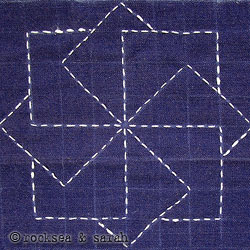
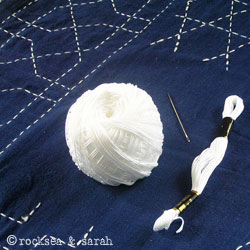

 Sarah has been researching and sharing hand embroidery lessons for over 17 years, making it accessible to everyone around the globe.
Sarah has been researching and sharing hand embroidery lessons for over 17 years, making it accessible to everyone around the globe.
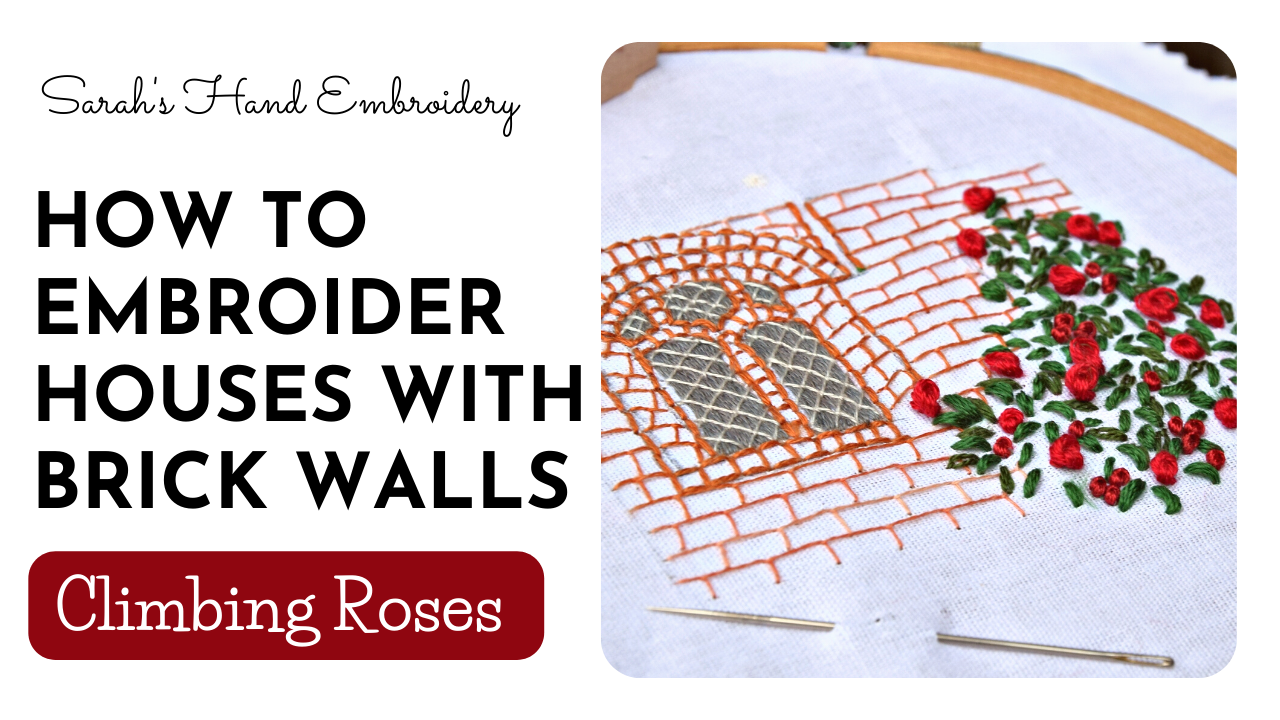
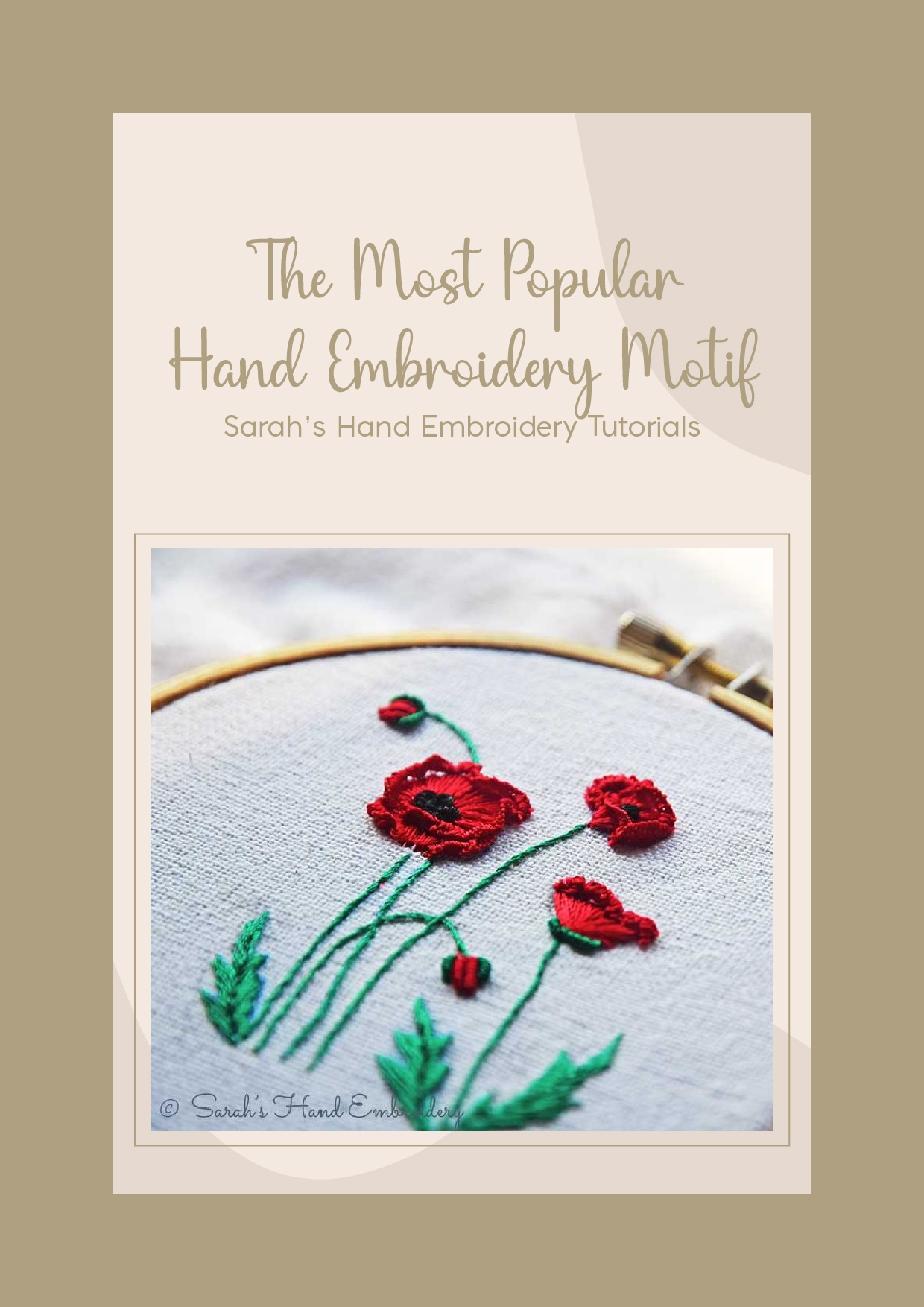
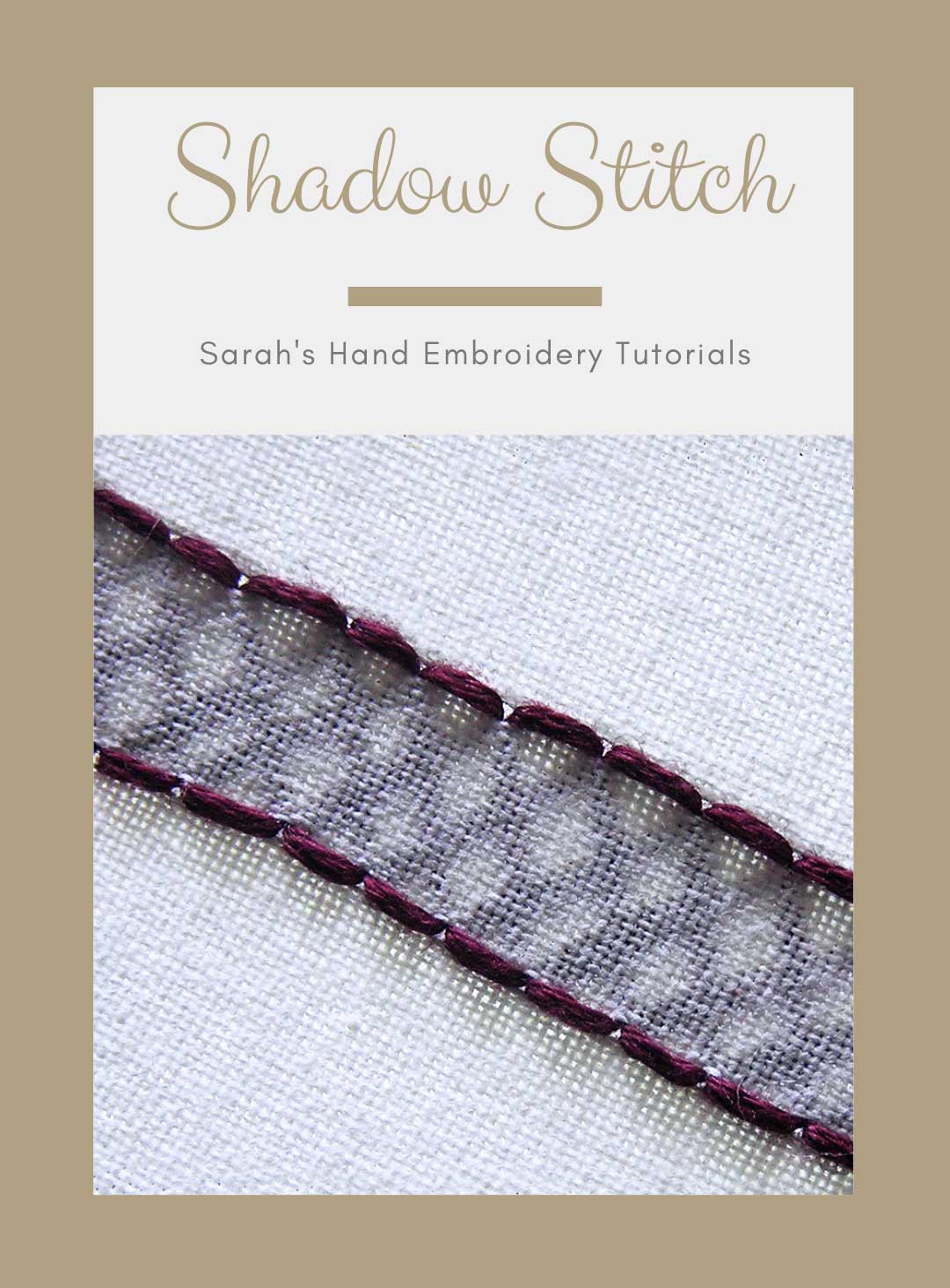


Thank you so much for teach us this lovely tradition;
I’ll love to know where can I purchase all the patterns that you are showing us and some. More advance please
Hi I m pallavi I have learn your blog , Thank you for such great tutorials on these stitches .I want learn some hand techniques but here no facilities . Than I m search online and see ur blog .and this is awesome blog.
I m learned very easyly hand embroidery.thank u
What lovely examples of Sashiko stitching!
I borrowed one of your images to use as an example of Sashiko for my Glossary page.
http://www.quilting-in-america.com/Quilt-Glossary.html
Please note that I did not modify the image in any way, your copyright is visible on the image, and the image is linked back to your page.
If this acceptable, then thank you very much. If not, please contact me and I will remove it immediately.
Happy stitching!
Lisa
We are happy that you find it useful. As long as you inform/credit us, it is always ok 🙂
Cheers,
Hi I have learnt a lot from your blog.





Curently I am working on making motifs for my Embroidery portfolio and I took help of your tutorials for some of them. posting the pics of the same! 🙂
Dear Aparna,
Thanks for sharing these samples of your hand embroidery effort. 🙂 They all look nice.
Hi. Thank you for such great tutorials on these stitches. Do you have a sampler we can download that incorporates all of these stitches? I would love to have something to frame like they used to do in the old days. And, not only would I have a piece of art, I would learn all these gorgeous stitches. Of course, you would have to designate where each stitch should go on the sampler, 🙂
Dear DJ,
It is nice to know of your interest to make a sampler. Right now I do not have any sampler you can download and work on. It is a long pending thing now, but my hands are so full with some projects that it is not easy for me to upload a sampler now. It might be easier if you could google for some sampler designs till I post one when I can. You can certainly ask me for suggestions on what stitches to do on the sampler you want to work on, and I will be glad to help you. Or, the simplest way to work on one is make horizontal rows of stitches you learn, mixing it randomly with one another.
🙂
hello,
angel mam, I am new 2 ur blog.My mom want me 2 learn some hand sewing techniques, bt here around no facility.
in tht case u came like an angel fr me thru ur blog.
before seeing ur blog i was nt much interested in handstitches but Now Within a week I have make my own handstich item !!!
with “wow expression” from my family ….
All credits 2 u!!!!!!!!!
Thanks a lot !
bst wishes fr u!!!!.
Hi Nishat,
What a delight to read your comment! 🙂
If it is possible for you, please upload a picture of your handstitched item here (use the ‘upload your stitches and embroideries’ function below the comment box). It will be nice to see it and a great inspiration to the other new learners as well.
I simply love your blog.It is so informative and the tutorials are excellent.Whenever I start an embroidery I go through all the stitches in your picture dictionary.
Thank you so much for sharing all this.
Hugs..Mahalakshmi
Hi Sarah,
Awesome…. nice designs and very informative….
Thank you for the great sashiko instructions. You have made them quite clear, and easy sounding.I will try this out during the holidays. Have a great week-end.
Thanks for the new kind of emb,Sara
great job sarah….
y can’t explain about machine embroidery also?
Thanks for sharing this! They make really beautiful designs; are you planning to show curved patterns?
Yes Sophie, I will be uploading a lesson on curved designs too…maybe by next week. 🙂